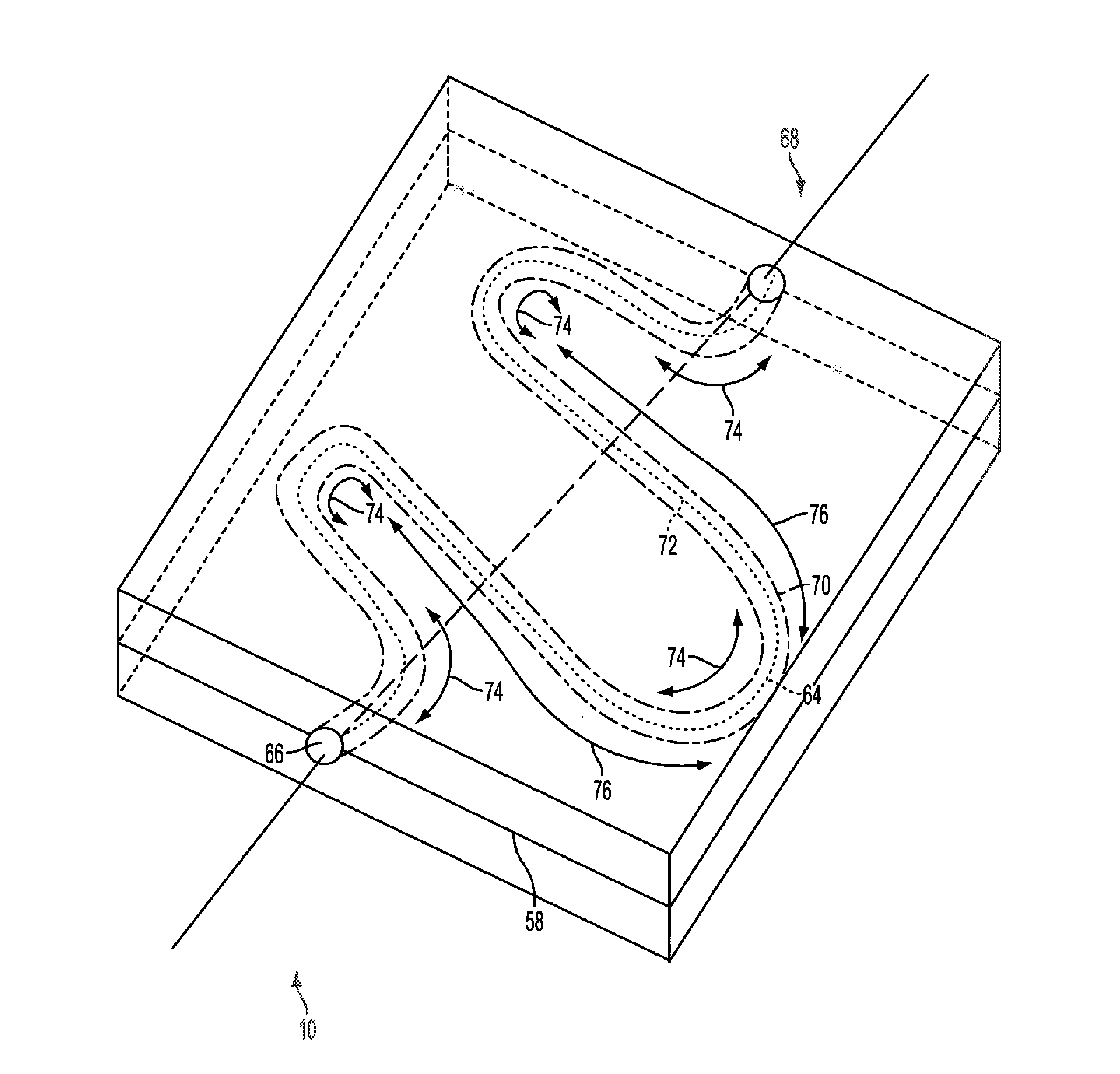Microfluidic device and method of fabricating microfluidic devices
a microfluidic device and microfluidic technology, applied in the field of microchannels for microfluidic devices, can solve the problems of difficult surface masking control, plastics are less desirable in such applications, and the bond between the substrate having the recess and the overlying cover material is difficult to achiev
- Summary
- Abstract
- Description
- Claims
- Application Information
AI Technical Summary
Benefits of technology
Problems solved by technology
Method used
Image
Examples
Embodiment Construction
[0027]Detailed illustrative embodiments of example embodiments are disclosed herein. However, specific structural and functional details disclosed herein are merely representative for purposes of describing example embodiments. The example embodiments may, however, be embodied in many alternate forms and should not be construed as limited to only example embodiments set forth herein.
[0028]As used herein, the terms “front,”“rear,”“left,”“right,”“top,”“bottom,”“upper,” and “lower” refer to relative placement of features shown in the drawings. These terms do not indicate that any specific embodiment is limited in its orientation unless otherwise specified in the accompanying description. As used herein, the terms “first” and “second” are used to distinguish one element from another and do not refer to any particular order or positional relationship. For example, a first element could be termed a second element, and, similarly, a second element could be termed a first element, without d...
PUM
 Login to View More
Login to View More Abstract
Description
Claims
Application Information
 Login to View More
Login to View More - R&D
- Intellectual Property
- Life Sciences
- Materials
- Tech Scout
- Unparalleled Data Quality
- Higher Quality Content
- 60% Fewer Hallucinations
Browse by: Latest US Patents, China's latest patents, Technical Efficacy Thesaurus, Application Domain, Technology Topic, Popular Technical Reports.
© 2025 PatSnap. All rights reserved.Legal|Privacy policy|Modern Slavery Act Transparency Statement|Sitemap|About US| Contact US: help@patsnap.com



